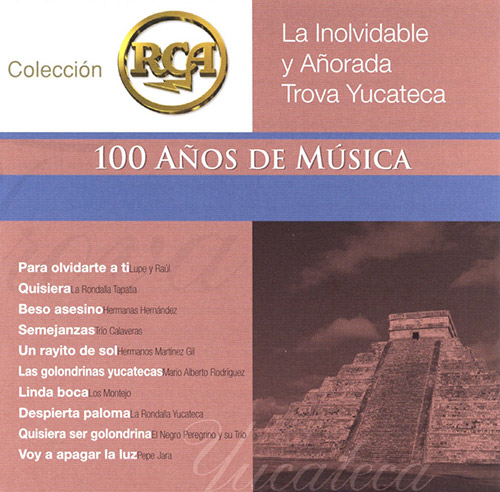
I have been fortunate to obtain this CD; the information for which was provided to me by Brígido Galván in recent email correspondence.
In short, I love this CD! It has provided all sorts of new inspiration for some of the songs yet to be written for certain characters in the Musical of The Stranger from Seville. The CD itself is 2002 release from BMG Entertainment México S.A. (IMSN: 74321 97621-2) and provides a wealth of music, mostly recorded between 1958-78.
‘Trova Yucateca’ is a musical milieu, as opposed to a musical genre. The style shares much in common with Neapolitan Song and other forms of Italian ‘canzona’. It uses quite distinct devices of vocal harmonies, cross-rhythms and cadential endings similar to the llamada in Flamenco song. Beyond this similarity, however, there seems to be little relationship to Flamenco – at least from the songs included in this two CD set.
As Richard Haefer, from Arizona State University has expertly reminded me, there was no Mariachi in the Yucatán in 1909 – the period in which both the novel and the Musical is set. This is sort of a musical quandry in many respects, as I prefer not to musically re-invent history when dealing with subject matter that is not fantasy-based. Notwithstanding, we have infused into the musical fabric of the score certain Mariachi elements, using the similarities and disparities of these distinct musical genres to foreground; for example, the cultural differences between Diego’s Spanish heritage and the characters of the story indigenous to The Yucatán Peninsula. This is used to some comedic effect in a song entitled ‘Men, Feo y Fuerte’. This particualr song also makes extensive use of the Columbian, ‘Curalao Aborao’ rhythm which, interestingly, although South American in origin, is used in The Yucatán region. The mystery of transplanted musical styles in México deepens!
There are two songs on CD 1 in which I am most interested: the first is Track 3 – ‘Ciudad Blanco’ performed in this rendition by Pepe Guizar from a 1962 recording. This song will be used as the template for a duet between the character of Edward Nelson (an American Ornithologist) and Sophia’s father, Roberto Duarte in Act I. The second song is Track 6 – ‘Beso asesino’ perfomed by Pepe Dominguez (singing both parts) which provides a rich tapestry from which to draw for a trio in Act II, featuring Aunt Marta, Gabriela and Doña Laura, entitled ‘Things a Girl Should Know’.
There is one song on the CD 1 in which I am most interested: Track 3 – ‘Ciudad Blanco’ performed in this rendition by Pepe Guizar from a 1962 recording. This song will be used as the template for a duet between the character of Edward Nelson (an American Ornithologist) and Sophia’s father, Roberto Duarte in Act I.
Trova Yucateca style is perfect to put across what we learn about these characters in furthering the dramatic line in the narrative.